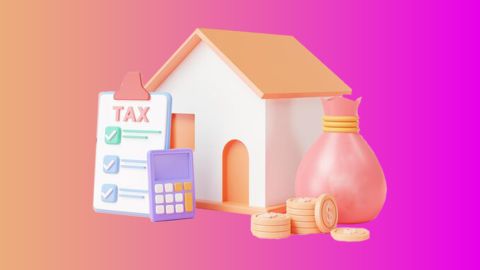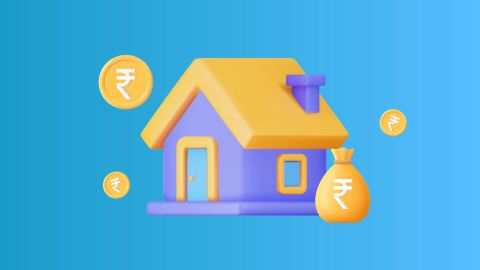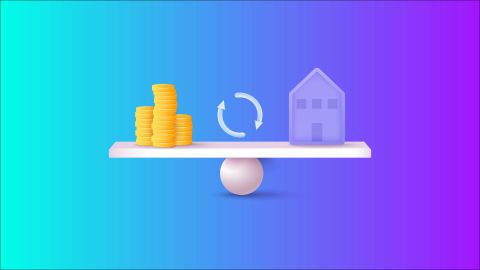Whether you are a prospective tenant or a property owner, it is essential to understand the differences between lease and rent to make informed decisions. Read on to understand the difference between a lease and rent, its pros and cons, and how they compare to a mortgage.
What does it mean to lease?
A lease is a legal agreement between a property owner (lessor) and a tenant (lessee). This grants the lessee the right to occupy the property for a specific period, usually six months to a year. The lease outlines the terms and conditions, including the monthly rent amount, security deposit, duration of the lease, and rules for using the property.
Pros of leasing an apartment
- Fixed rental rate: With a lease, the rental rate remains constant throughout the lease term
- Longer tenancy: Leases typically span for longer durations, providing the lessee with a sense of stability and long-term housing security
- Limited rent increases: Property owners usually cannot raise the rent during the lease period, protecting tenants from sudden and significant rental rate hikes
Cons of leasing an apartment
- Less flexibility: Lease agreements are binding for the entire duration, limiting the tenant's flexibility to move out before the lease ends without facing penalties
- Responsibility for repairs: Depending on the lease terms, tenants may be responsible for minor repairs and maintenance of the property
What does it mean to rent?
Renting refers to the act of paying a landlord to occupy a property without a fixed-term commitment. Rental agreements are typically month-to-month and automatically renew unless terminated by either party with proper notice.
Pros of renting an apartment
- Flexibility: Renting provides the tenant with the freedom to move out with short notice, making it suitable for those who may need to relocate frequently
- Minimal responsibility: Renters are usually not responsible for property maintenance or major repairs, as the property owner retains these obligations
Cons of renting an apartment
- Potential rent increases: Unlike leases, property owners can increase the rent with proper notice, which may lead to uncertain and fluctuating housing costs
- Limited stability: Month-to-month rental agreements offer less stability, and tenants may face the possibility of having to find new housing quickly
Leasing versus renting
The primary distinction between leasing and renting lies in their commitment and duration. A lease is a fixed-term agreement, providing stability and predictability but limiting flexibility. Renting offers more flexibility but lacks the long-term security of a lease.
Difference between lease and rent
Aspect |
Lease |
Rent |
Duration |
Typically long-term, often years |
Short-term, usually months |
Agreement Type |
Lease Agreement |
Rental Agreement |
Ownership |
No ownership transfer |
No ownership transfer |
Renewal |
Generally, automatic renewal |
Typically, needs regular renewal |
Rent Payment |
Fixed for the lease term |
May increase periodically |
Security Deposit |
Usually higher |
Typically one or two months' rent |
Alterations |
Tenant may make significant changes |
Tenant usually limited in changes |
Maintenance |
Often tenant's responsibility |
Typically landlord's responsibility |
Purpose |
Often for residential or commercial |
Primarily for residential use |
Legal Implications |
More legally binding |
Less legally binding |
Termination Notice |
Requires advance notice |
Requires advance notice |
What is the difference between lease and mortgage?
While lease and mortgage both involve housing arrangements, they are entirely different concepts. A lease pertains to a rental agreement between a tenant and a landlord, where the tenant pays rent to occupy the property for a fixed duration. A mortgage is a loan taken by a property buyer from a financial institution to purchase the property. The buyer repays the loan in instalments until the mortgage is fully paid off, and they become the property's sole owner.
Aspect |
Lease |
Mortgage |
Ownership |
Tenant has temporary rights |
Borrower has ownership rights |
Nature |
Rental agreement for a fixed term |
Loan agreement for property purchase |
Payment |
Regular rent payments |
Monthly mortgage payments |
Property use |
Limited rights to use the property |
Full rights to use the property |
Ownership transfer |
No transfer of ownership rights |
Transfer of ownership upon full repayment of the loan |
Duration |
Typically short-term (1-3 years) |
Long-term (15-30 years) |
Equity build-up |
No equity build-up, as no ownership |
Equity builds up as the loan is repaid |
Maintenance |
Often, the landlord handles maintenance |
Homeowner is responsible for property maintenance |
Approval process |
Generally less complex |
More rigorous approval process for mortgages |
Tax implications |
Limited tax benefits for tenants |
Potential tax benefits for homeowners |
Flexibility |
More flexibility to relocate |
Less flexibility due to property ownership |
Down payment |
Generally requires a security deposit |
Requires a down payment for property purchase |
Home loan for buying a property to rent out
A home loan can be a useful financial tool for various purposes, including buying a property to rent out. Here are some considerations regarding using a home loan for renting purposes:
Advantages:
- Rental income: When you use a home loan to purchase a property, you can generate rental income by leasing it to tenants. This income can help you cover the mortgage payments and potentially generate a profit.
- Asset appreciation: Real estate properties have the potential to appreciate in value over time, allowing you to build equity and potentially realise capital gains when you sell the property.
- Tax benefits: In some countries, you may be eligible for tax deductions on the interest paid on the home loan, which can reduce your overall tax liability.
Considerations:
- Financial commitment: Taking out a home loan is a significant financial commitment. Ensure you have the financial stability to cover the mortgage payments even if the property is vacant for period.
- Property management: Owning a rental property comes with responsibilities such as property management, maintenance, and dealing with tenants. Consider if you have the time and resources to manage these aspects or if you need to hire a property management company.
- Market conditions: The success of your rental property investment can be influenced by local real estate market conditions, demand for rental properties, and property location. Research these factors carefully.
- Loan terms: Choose a home loan with favourable terms, including interest rates, loan tenure, and repayment structure. This will impact your overall financial burden.
- Rental income vs. loan costs: Evaluate whether the rental income you can generate from the property is sufficient to cover your home loan costs, including the principal and interest payments, property taxes, insurance, and maintenance expenses.
- Risk management: Consider potential risks, such as fluctuations in property values, changes in local rental markets, and unexpected expenses. Have a contingency plan in place.
In conclusion, using a home loan for renting purposes can be a viable investment strategy if approached with careful planning and consideration of your financial situation, the local real estate market, and your long-term goals. It is advisable to consult with financial advisers or real estate professionals to make informed decisions regarding real estate investments and home loans.
Understanding the difference between lease and rent is crucial for anyone involved in property transactions. A lease offers stability and predictability but may limit flexibility, while renting provides more freedom but lacks long-term security. In contrast, a mortgage is a financial arrangement that facilitates property ownership through loan repayments. Assessing your housing needs and financial circumstances will help you decide which option aligns best with your requirements.




